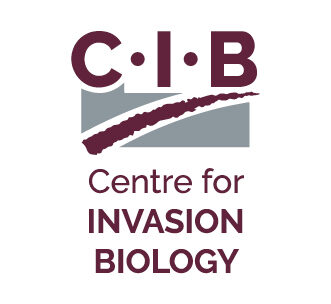Project background
In recognition of the escalating scale of marine invasions, there is an increasing need to understand the drivers of invasions in Marine Protected Areas (MPAs), their implications for areas of conservation concern and how to manage them in an effective and cost-efficient manner.
We are looking for a dynamic, self-motivated, field-work loving post-doctoral research fellow to further develop on-going research. The incumbent will:
· Lead NIS surveys of South African MPAs and surrounding marinas;
· Use the data from the surveys to test hypotheses around the role of MPA buffer zones and their potential to support the early detection of invasions;
· Contribute to the development of an electronic marine alien species guide for use by South African MPA staff and visitors;
· Contribute to updating the South African list of marine alien species.
This position will require fieldwork in a variety of South African MPAs, matched with critical analysis and publication of results in top-tier journals. The successful candidate will work with teams of post-graduate students and a variety of MPA staff.
This post doc position will be based within the Centre for Invasion Biology at Stellenbosch University, South Africa.
Supervisory team
Prof. Tammy Robinson-Smythe
Funding
Two years of funding are available. Ideally this position will be filled by December 2025 or as soon as possible thereafter.
Requirements
● PhD in marine ecology, invasion biology or related field (graduated in the last 5 years);
● A strong publication record;
● Advanced analytical skills in R;
● Good people skills and an ability to work within a diverse research team;
● A valid drivers licence;
● Taxonomic experience with a focus on fouling biota (especially crustaceans or ascidians) will be advantageous;
● Driven candidates with a keen interest in managing invasions in protected areas are encouraged to apply.
Further reading
1. Bailey SA, Brown L, Campbell ML et al (2020) Trends in the detection of aquatic non-indigenous species across global marine, estuarine and freshwater ecosystems: A 50-year perspective. Diversity & Distributions 26:1780–1797. DOI: 10.1111/ddi.13167
2. Loureiro TG, Peters K, Robinson TB (2021) Dropping plates to pick up aliens: towards a standardised approach for monitoring alien fouling species. African Journal of Marine Science 43: 1-15 DOI: 10.2989/1814232X.2021.1989488
3. Ackland SJ, Anderson MN, Kock A, van Blerk D, Ariefdien R, Robinson TB (2025) First record of the marine alien bryozoan Amathia verticillata (delle Chiaje, 1822) in South Africa. BioInvasion Records 14: 183-196. DOI: 10.3391/bir.2025.14.1.15
4. Robinson TB, Hulme PE, Lieurance D and Richardson DM (2025) Managing biological invasions in protected areas: seeking new strategies to achieve global targets. Biological Invasions 27:18 DOI: 10.1007/s10530-025-03581-w
5. Steyn C, Robinson TB (2025) A climate sensitive watch list for alien species in South African kelp forests. Management of Biological Invasions 16: 375-396 DOI: 10.3391/mbi.2025.16.2.04
6. Hulme PE, Lieurance D, Richardson DM, Robinson TB (2025) Multiple targets of the Global Biodiversity Framework must be addressed to manage invasive alien species in protected areas. NeoBiota 99: 149-170. DOI: 10.3897/neobiota.99.152680
7. Castro, N., Monteiro, J.G., Gouveia, M.M. et al. Refining management strategies in marine protected areas in oceanic islands: a non-indigenous species risk index for strategic prioritization. Biol Invasions 27, 89 (2025). DOI:10.1007/s10530-025-03536-1
8. Ackland SJ, Richardson DM, Robinson TB (in press) First insights into the scale of invasions in African marine protected areas: leveraging global databases and citizen science data. NeoBiota
If you are interested
Contact Prof. Tammy Robinson (trobins@sun.ac.za). When applying please include your CV and a motivation for why you are suited to this position.
